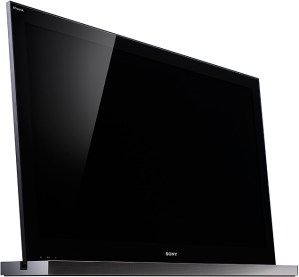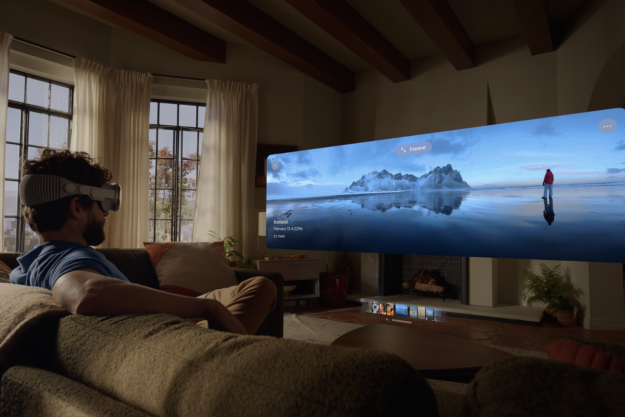
Back at January’s Consumer Electronics Show, Sony was one of the major electronics manufacturers jumping on the 3D bandwagon and eager to show off its forthcoming 3D-capable, high-definition gear. Now, the company has said when consumers will actually be able to set hands on the stuff: Sony plans to begin selling its first 3D-capable televisions in Japan this June, with launches in the United States and other markets coming at about the same time.
Sony will start the Japanese market off with 40- and 460-inch versions of its Bravia flat-screen TV on June 10; 52- and 60-inch versions will follow on July 16. The 42-inch 3D-capable television will carry a suggested retail price of about ¥290,000 (roughly $3,200 USD); the 60-inch version will run some ¥580,000 (about $6,400 USD). The televisions will (of course) come with 3D glasses, along with a camera sensor that will adjust audio and picture based on a viewer’s location relative to the screen. Sony also plans to bring two less-expensive 3D televisions to market, but will sell glasses and a camera sensor separately.
Sony CEO Howard Stringer says Sony hopes 3D technology will help push the company’s television and gaming businesses into profitability this year; the company hopes to sell as many as 2.5 million 3D-capable televisions during its next fiscal year. Sony also plans to bring 3D capability to the PlayStation 3 via a firmware upgrade by mid-2010, meaning the company will be able to offer a complete 3D entertainment experience—3D televisions, Blu-ray players, and gaming—from a single vendor. Sony hopes that will give it an edge over the likes of Samsung and Panasonic, which are also moving to bring 3D-capable televisions to market quickly.
Editors' Recommendations
- What is spatial audio? The 3D sound experience fully explained
- 3D is readying for another comeback — and this time it’s personal
- You Asked: TVs over fireplaces, Sonos vs. Wi-Fi smart speakers, and 3D TVs
- LG’s new M-Series Wireless OLED TVs start at $5,000
- Sony’s 2023 A95L QD-OLED TV up for preorder in August starting at $2,800


